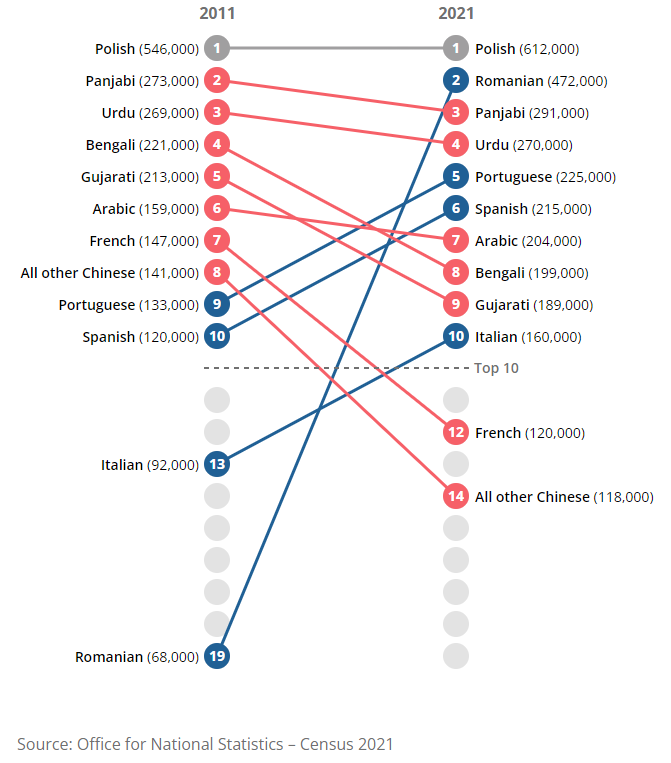Britain ‘increasingly multi-cultural’ as one in 10 homes contains two or more ethnicities
Around one in 10 households (2.5 million) contained members from at least two different ethnic groups last year, compared with 8.7 per cent in 2011, the ONS said.
Your support helps us to tell the story
From reproductive rights to climate change to Big Tech, The Independent is on the ground when the story is developing. Whether it's investigating the financials of Elon Musk's pro-Trump PAC or producing our latest documentary, 'The A Word', which shines a light on the American women fighting for reproductive rights, we know how important it is to parse out the facts from the messaging.
At such a critical moment in US history, we need reporters on the ground. Your donation allows us to keep sending journalists to speak to both sides of the story.
The Independent is trusted by Americans across the entire political spectrum. And unlike many other quality news outlets, we choose not to lock Americans out of our reporting and analysis with paywalls. We believe quality journalism should be available to everyone, paid for by those who can afford it.
Your support makes all the difference.A total of 81.7 per cent of residents in England and Wales identified their ethnic group as white on the day of the 2021 census, down from 86.0 per cent a decade earlier, the Office for National Statistics said.
The second most common ethnic group was “Asian, Asian British or Asian Welsh” at 9.3 per cent, up from 7.5 per cent in 2011.
Around one in 10 households (2.5 million) contained members from at least two different ethnic groups last year, compared with 8.7 per cent in 2011, the ONS said.
Census deputy director Jon Wroth-Smith said: “Today’s data highlights the increasingly multi-cultural society we live in”
The proportion of the population of England and Wales describing themselves as Christian has fallen below half for the first time with 46.2 per cent - 27.5 million people - describing themselves as such. This is a 13.1 percentage point decrease from 2011.
Responding to the census figures, the Archbishop of York said the country had “left behind the era when many people almost automatically identified as Christian”.
“No religion” was the second most common response, increasing by 12.0 percentage points to 37.2 per cent from 25.2 per cent in 2011.
The number of people describing themselves as Muslim has increased from 4.9 per cent to 6.5 per cent, with Hindu residents up to 1.7 per cent from 1.5 per cent in the last census.
London remains England's most religiously diverse region, with just over a quarter (25.3 per cent) of people reporting a religion other than Christianity on the day of the 2021 census.
South-west England is the least religiously diverse region, with 3.2 per cent selecting a religion other than Christianity.
Responding to the data, Humanists UK Chief Executive Andrew Copson said it should be a “wake-up call which prompts fresh reconsiderations of the role of religion in society.”
“‘One of the most striking things about these Census results is how at odds the population is from the state itself,” he said.
“No state in Europe has such a religious set-up as we do in terms of law and public policy, while at the same time having such a non-religious population. Iran is the only other state in the world that has clerics voting in its legislature. And no other country in the world requires compulsory Christian worship in schools as standard.
“The law has failed to keep up with the pace of change, and as a result, the enormous non-religious population in England and Wales face everyday discrimination – from getting local school places to receiving appropriate emotional support in hospitals.”

In England and Wales, Polish was the most common main language for those who did not speak English as a main language with 591,00 and 21,00 people respectively indicating this across the census survey (1.1 per cent).
The next most common main language in England and Wales was Romanian (0.9 per cent) and Arabic respectively (9,000), followed by Punjabi and Urdu in England - both widely spoken languages in India and Pakistan, as well as elsewhere in South Asia.
Previous figures from the ONS show that one in six people living in England and Wales were born outside of the UK - an increase from 7.5 million to 10 million (16.8 per cent of the population).

Join our commenting forum
Join thought-provoking conversations, follow other Independent readers and see their replies
Comments